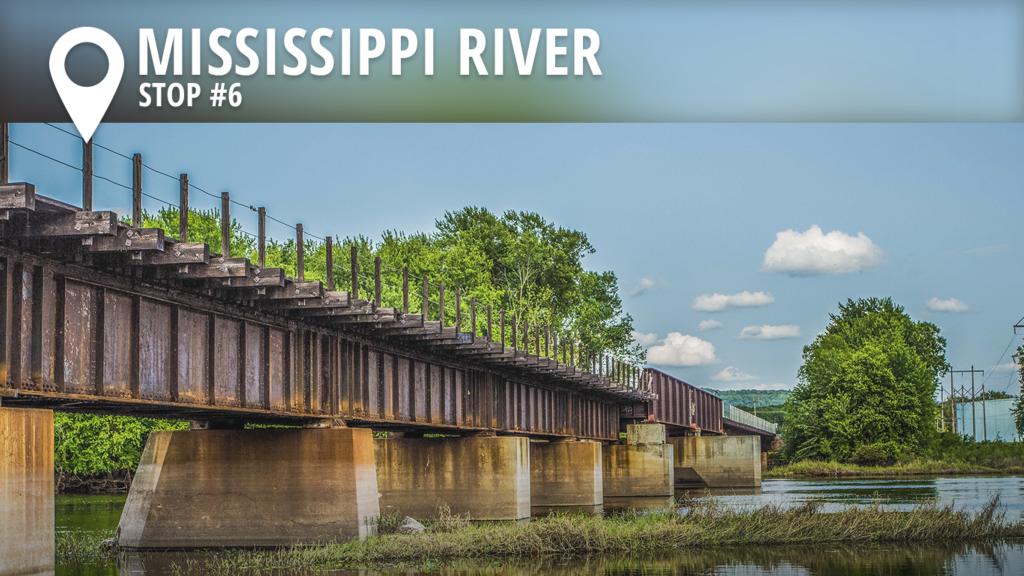2017 Mississippi River Preview

Mississippi River (pool 7, 8 and 9)
La Crosse, Wis.
May 18-21, 2017
Hosted by Explore La Crosse
About the Fishery
The FLW Tour anglers will launch in Pool 8 of the Mississippi River and have the option to lock upstream to Pool 7 or downstream to Pool 9. These three impoundments of the largest drainage system in North America provide an ample amount and variety of cover for bass to reside. Vast swaths of vegetation, wing dams, rock jetties, backwater pools and shallow laydowns can be found throughout the river.
Straddling the border between Minnesota and Wisconsin, the river supports healthy populations of largemouth and smallmouth bass. Anglers shouldn’t struggle to catch limits of 2- to 3-pound largemouths. However, it’s the bigger bass in the 5-pound class that cash checks. Smallmouths are less abundant but are typically larger.
Last Time
The FLW Tour hasn’t competed on this stretch of the Mississippi River. When the Costa FLW Series last visited La Crosse in September 2014, it took 15 pounds a day to win. The T-H Marine Bass Fishing League Great Lakes Division competes on the Mississippi multiple times each year. A 2016 BFL tournament held in La Crosse in mid-May was won with a five-bass limit of 20 pounds, 15 ounces – all smallmouths. They were predominantly caught off a point where two current seams met behind an island.
Although this tournament arena is new to the Tour, there is no shortage of major tournament results for anglers to review before they make the trek to Wisconsin.
What to Expect this Time
There’s a new factor that’ll impact the outcome of not just this tournament, but any major tournament based out of La Crosse going forward. New to the 2017 Minnesota DNR regulations, anglers can now cull bass in Minnesota waters. Previously, it wasn’t allowed in Minnesota waters, but was legal in Wisconsin. The entire system is fair game now. That means anglers have more freedom to strategize where they want to fish and how to manage fish if they locate a school.
Depending on the weather conditions, bass will be somewhere between spawn and postspawn in late May. Spawning largemouths head to the first decent vegetation that’s out of the current. Once done spawning, they make their way back to the vegetation’s current edge. Smallmouths bed anywhere that’s out of the current, whether it’s one large rock, an entire wing dam or in the backwaters. They’ll head back to the stronger current areas to feed once in postspawn.
Whether he targets smallmouths or largemouths, the day-one leader can be expected to come in with a bag nearing 20 pounds. Averaging 20 over four days would be pretty unlikely, however.
Baits and Techniques
For smallmouths – Smallmouths will relate to different areas with current depending on how far along they are in the spawn. They can be targeted with jerkbaits, square-bills, Carolina rigs and swim jigs.
For largemouths – Largemouths will probably be pulled out of new vegetation with frogs, swim jigs and flipping baits.
3 Critical Factors
1. Rain – Heavy rainfall could heavily shift tournament strategies. Too much, and the river will resemble chocolate milk. Backwaters get especially dirty and make hard banks impossible to reach in wooded areas. Pool 8, with its many tributaries, is severally affected, making some areas unfishable and dramatically shrinking the playing field.
2. Locking – Last season at Pickwick Lake several anglers who had locked up to Wilson Lake were late to check-in because a barge was blocking the lock on their way back through. The incident illustrated the risk involved with changing pools. The Mississippi River, flowing from northern Minnesota to the Gulf of Mexico, has substantial commercial barge traffic that could present a similar situation.
3. Crowds – There are plenty of well-known community holes throughout the Mississippi River. Whether it’s the Onalaska grass bed in Pool 7 or the spillways flowing into Pool 8, these areas consistently produce fish, and the anglers know it. Whether or not to fish those areas depends on whether or not an angler wants to share fish with a crowd.
Fantasy Fishing Picks
Though fish are easy to come by on the river and information about fishing La Crosse is plentiful, there won’t be too many pros in the field with extensive experience there, particularly in May. Choosing locals for a fantasy roster is a safe bet. Tom Monsoor is probably the best-known local angler, but Austin Felix and Matt Stefan are from the area too. Mark Rose grew up fishing on the Mississippi, but much farther south near Memphis. Scott Canterbury and Gary Yamamoto have had success in La Crosse at the Costa FLW Series level.
